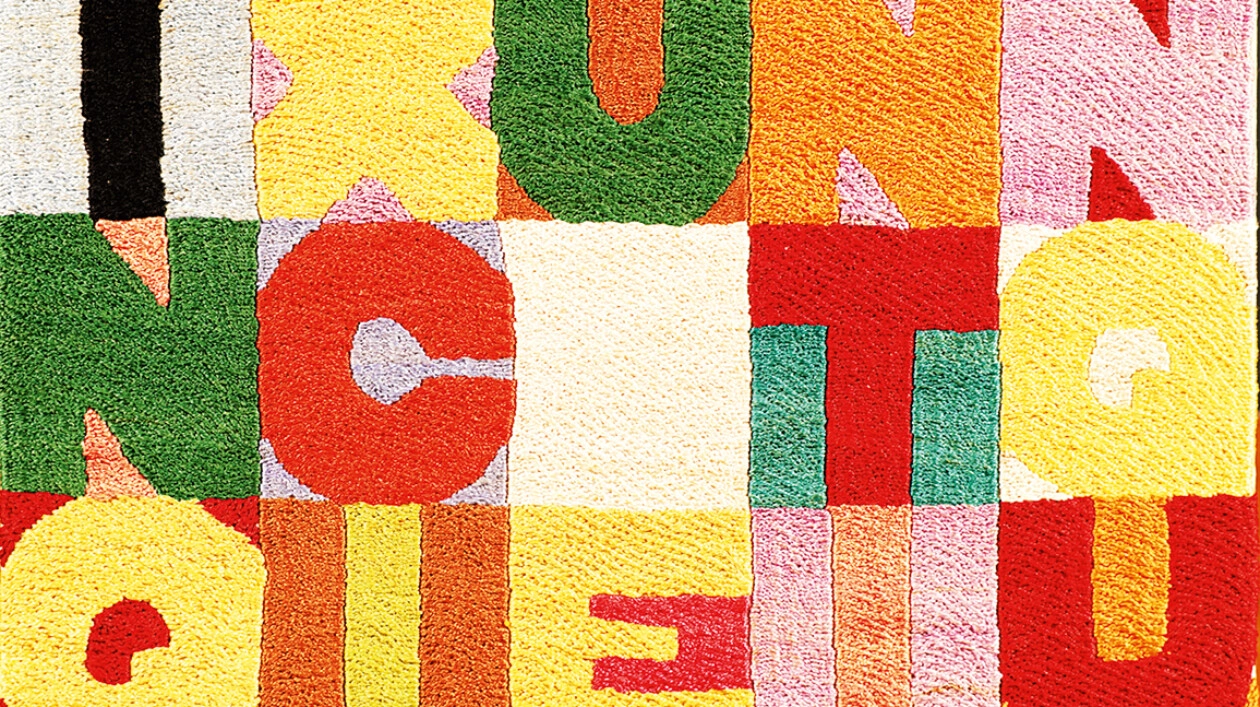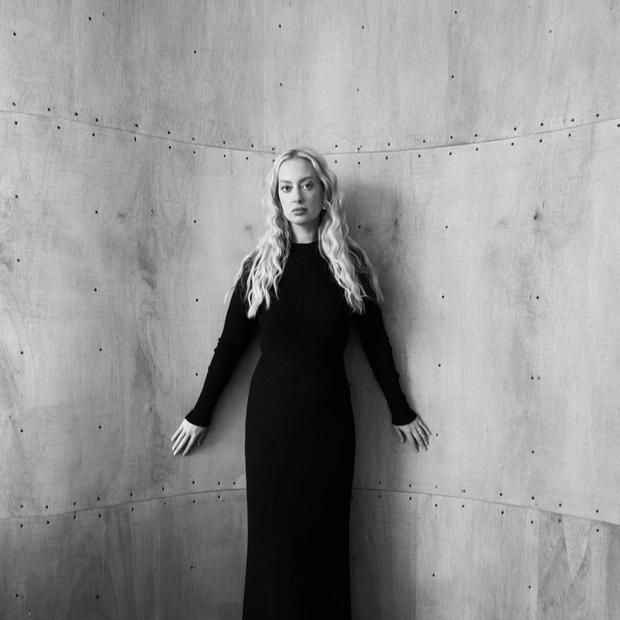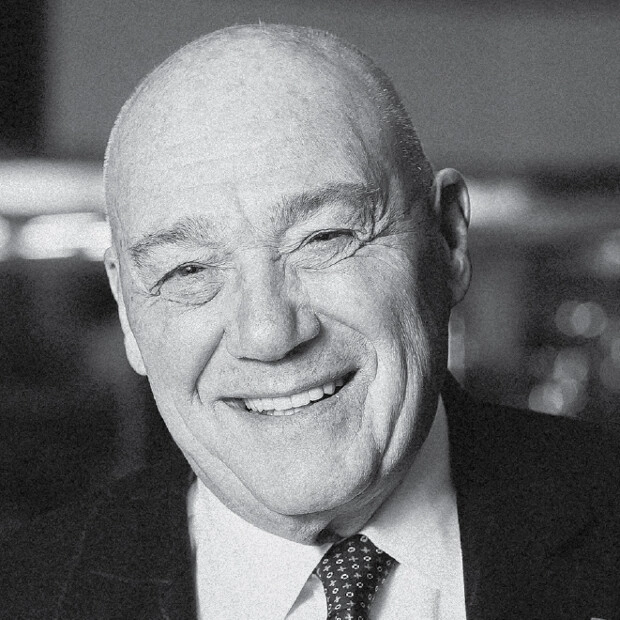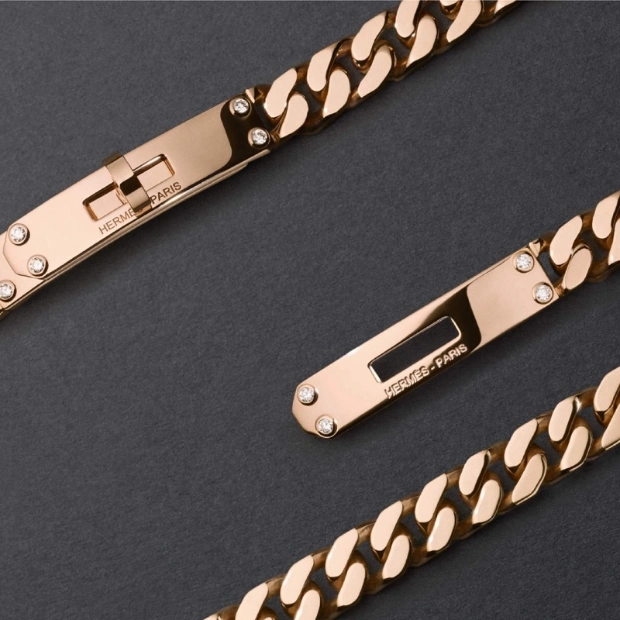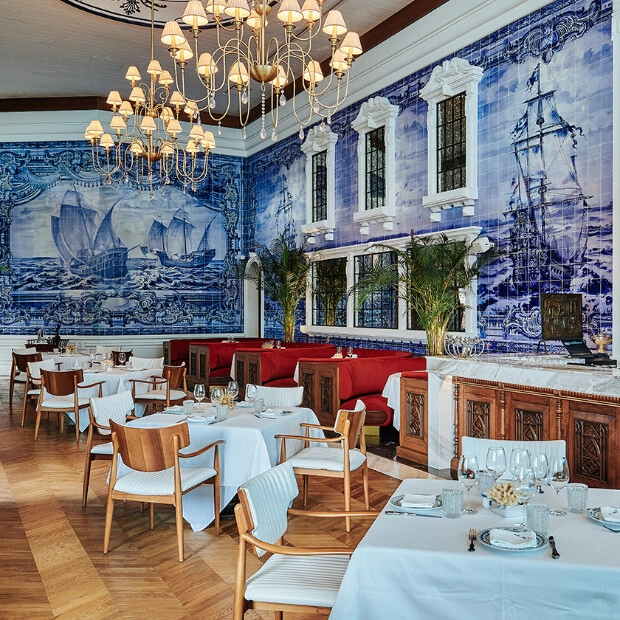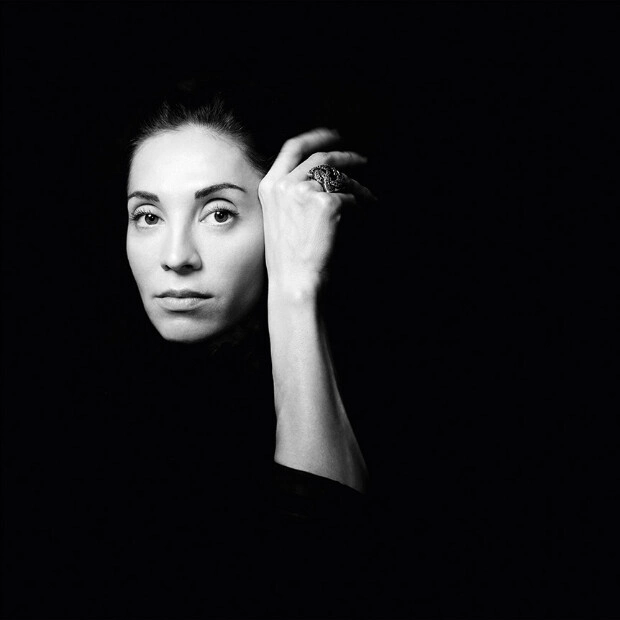C1760 Gallery is delighted to introduce this year’s selection of Abu Dhabi Art, featuring cross-continental highlights of the kinetic and op art scenes. Works from South America’s influential abstract avant-garde and op art circles are in dialogue with European positions. These new experimental movements emerged mainly in the 1960s, seeking to break with traditional practices by exploring materials, surfaces, light, and movement.
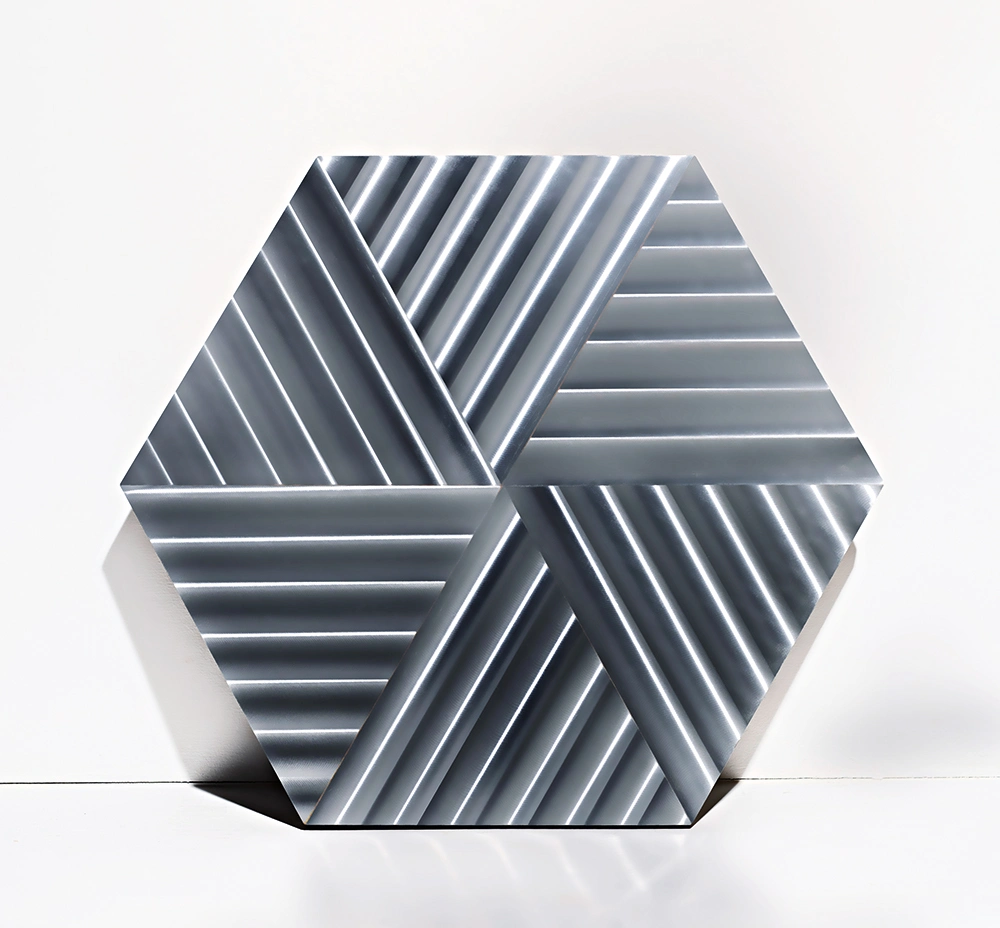
Getulio Alviani, Aluminium
The work of a leading figure in the kinetic art movement, Getulio Alviani of Italy (1939, Udine, Italy – 2018, Milan, Italy) transcended media and disciplines, such as painting, printmaking, sculpture, jewellery, architecture, and industrial design. He was an initiator of the aesthetic debate on programmed art, internationally recognised since the early 1960s. In 1961, Alviani joined Novet Tendencije (New Tendencies), a series of exhibitions in Zagreb, Croatia, which gathered constructive artists, reflecting the era’s advancements in mass production. In 1965, 26-year-old Alviani participated in the Museum of Modern Art’s ground-breaking exhibition, ‘The Responsive Eye’, which placed him at the international forefront of the programmed art movement. Alviani’s works sell well at Italian and international modern art auctions, such as the ‘Italian Sales’, held in London by Christie’s and Sotheby’s.
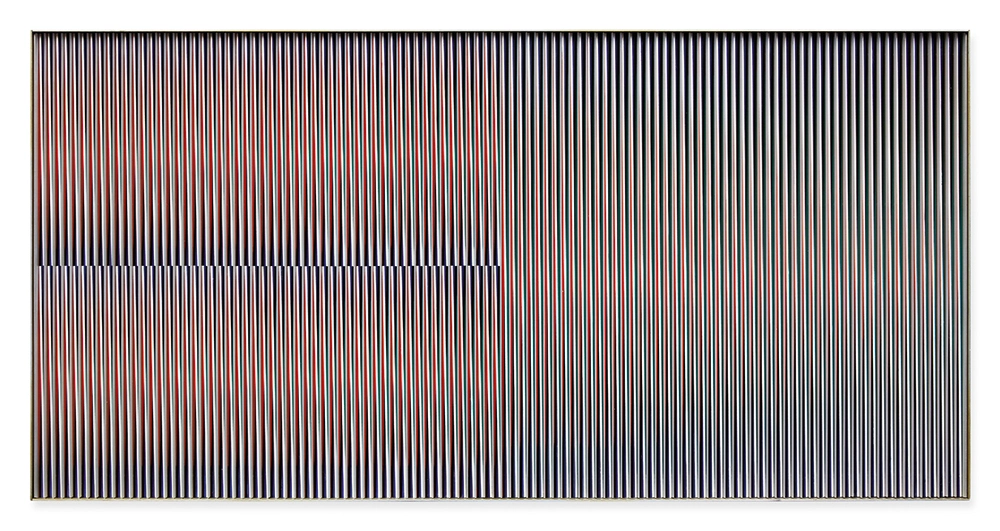 Carlos Cruz-Diez Physichromie No. 2061
Carlos Cruz-Diez Physichromie No. 2061A major protagonist in the field of kinetic & optical art, a movement, encouraging ‘an awareness of reality’s instability’, his artwork established him as one of the key XXth century thinkers in the realm of colour. The artist drew on Georges Seurat’s pointillist techniques and Josef Albers’s colour theories to produce neon-hued linework and gridded compositions, appearing to shift and vibrate. Cruz-Diez made prints, paintings, and installations throughout his career, extending his methods to large-scale and experiential works. He studied art in Caracas, worked in journalism and advertising, then moved to Paris in 1960. He went on exhibiting in, among other cities, New York City, Paris, and Caracas. His art is to be found at the Tate, the Centre Pompidou, the Museu de Arte Moderna, Rio de Janeiro, the Museum of Modern Art, and the Museum of Fine Arts, Houston, the USA, to name just a few museums and art galleries.
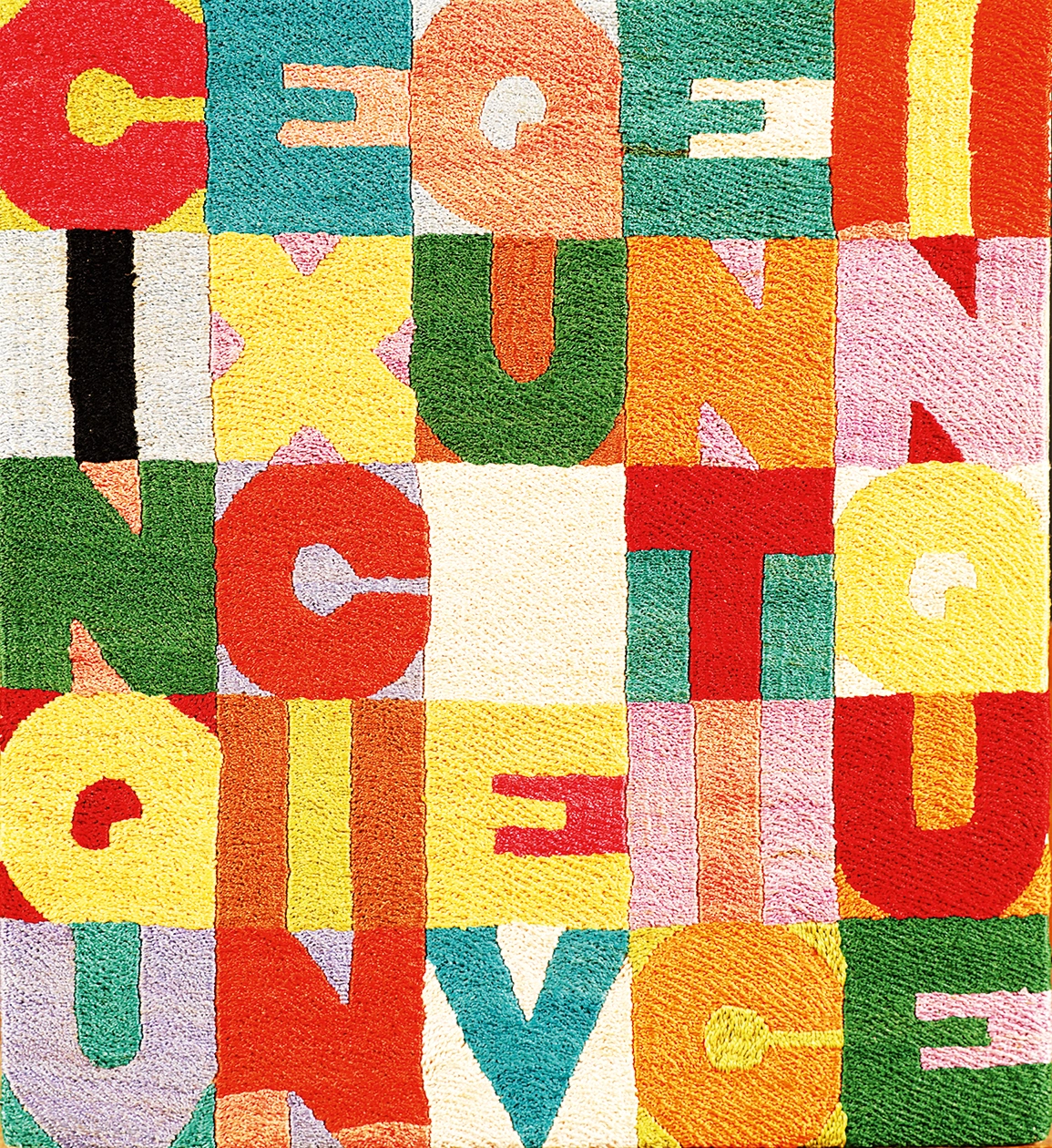 Alighiero Boetti, Cinque e cinque venticinque
Alighiero Boetti, Cinque e cinque venticinqueThe Zero artist group, founded in 1958 in Duesseldorf, Germany, was highly influential during that period. The Zero artists fused minimalist aesthetics with the Arte Povera methods to bring a fresh innovative spirit to the European postwar art scene. Italian conceptualist artist Alighiero Boetti (1940, Turin – 1994, Rome, Italy) was part of the Arte Povera movement. ‘Cinque e cinque venticinque’ (circa 1982) is one of his characteristic embroidery pieces.
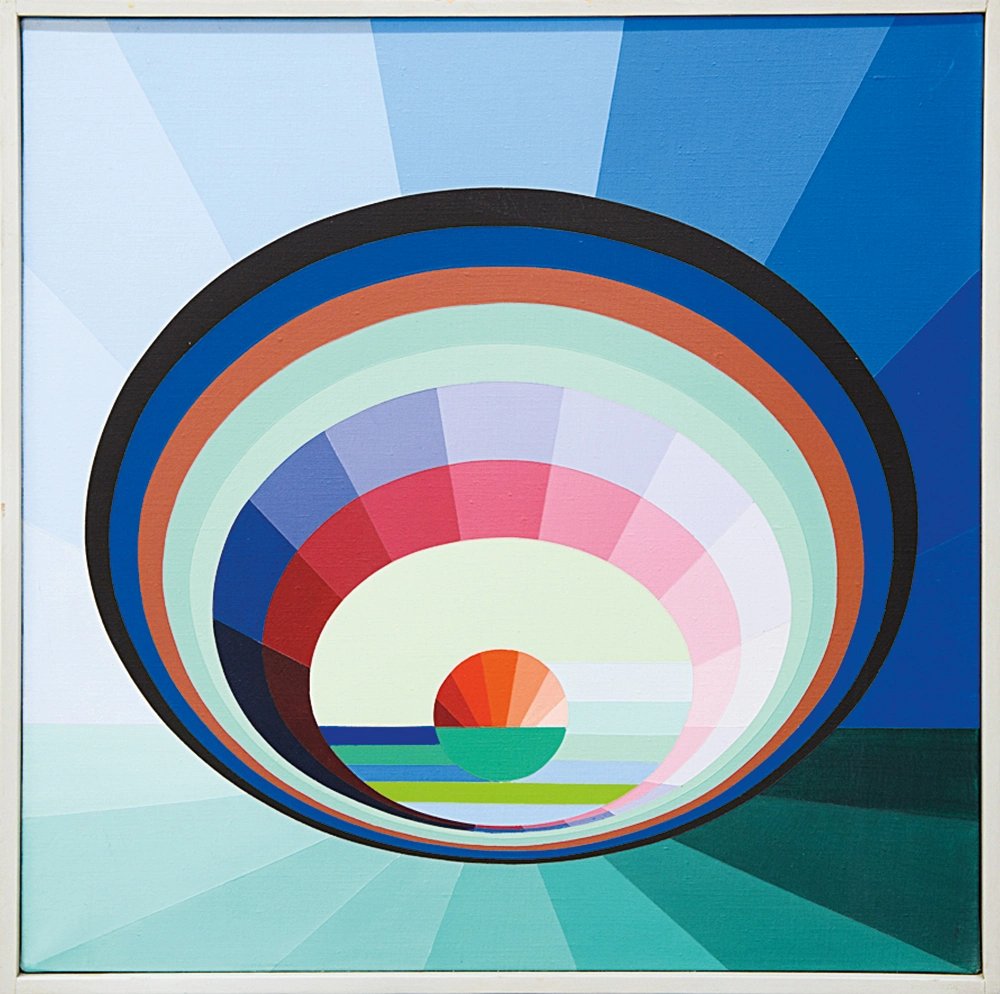 Gregorio Vardanega, Expansion Rayonnante
Gregorio Vardanega, Expansion Rayonnante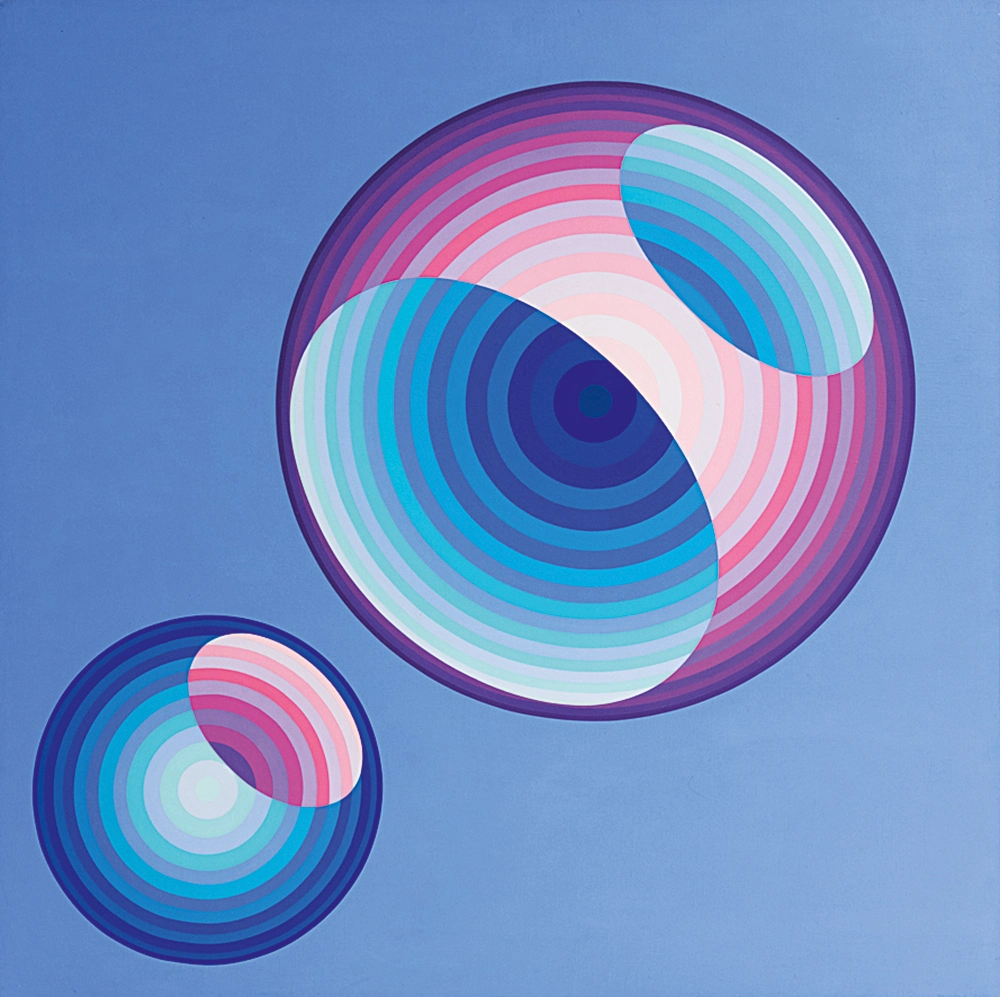 Martha Boto, Cosmic I
Martha Boto, Cosmic IIn the centre of many Argentina’s avant-garde artistic circles, were Gregorio Vardanega (1923–2007, Argentina/Paris) and Martha Boto (1925, Buenos Aires – 2004, Paris), later becoming his partner. Both were founding members of the Asociación Arte Nuevo in 1955 and next year of Artistas No Figurativos Argentinos (ANFA). They moved to Paris in 1959 and continued establishing their key position in op a kinetic art. We’ve included in this presentation a series of canvas works by Vardánega and Boto, emphasising the interrelation of colour and geometrical form. Early tendencies of Argentinian abstract avant-garde are incorporated with a 1952 work by Raúl Lozza (1911–2008, Argentina).
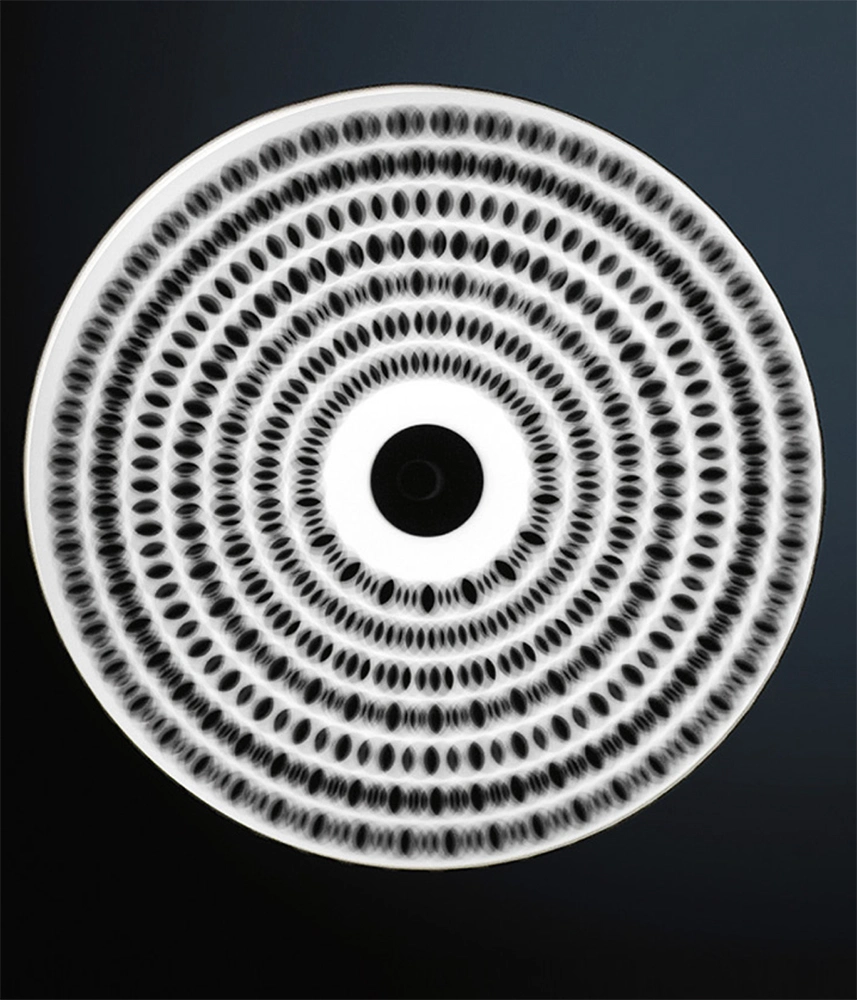 Antonio Barrese, Strobo_Double HZ
Antonio Barrese, Strobo_Double HZThanks to Antonio Barrese (born 1945, Milan, Italy), we can witness the influential artistic avant-garde circles of Milan, Italy, in the 1960s. Barrese was a founding member of MID Group, dedicated to researching and expanding beyond the disciplinary borders at the intersection of visual, kinetic, programmed, and the first computer art.
